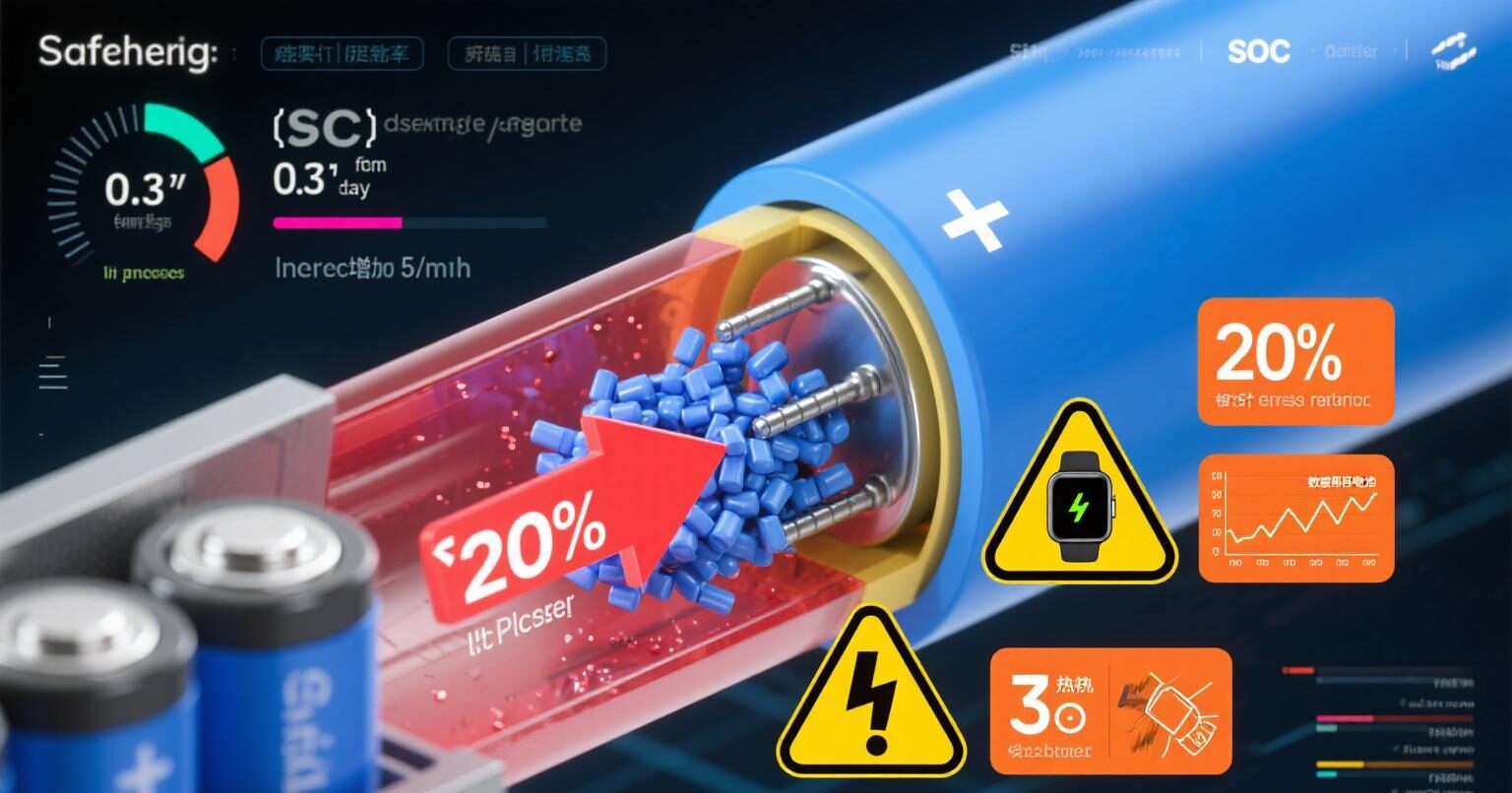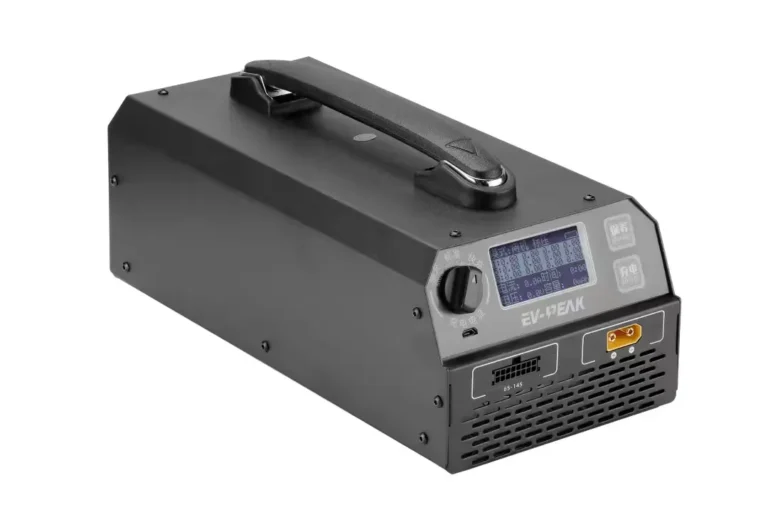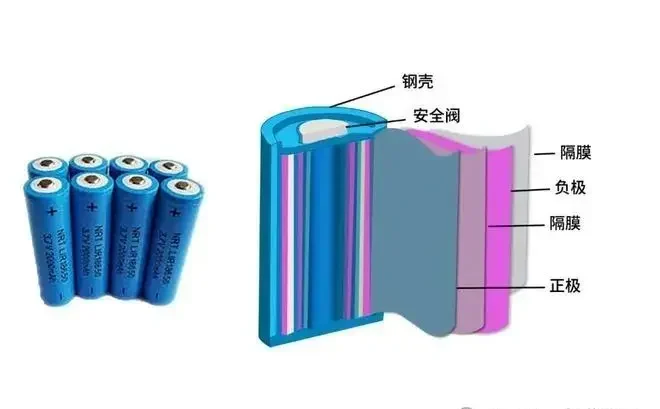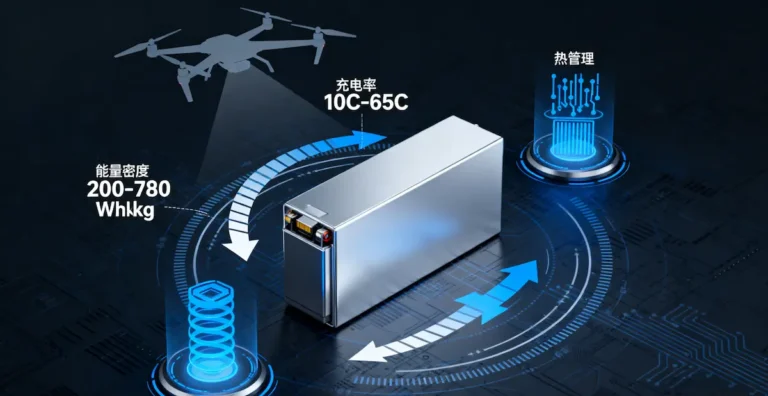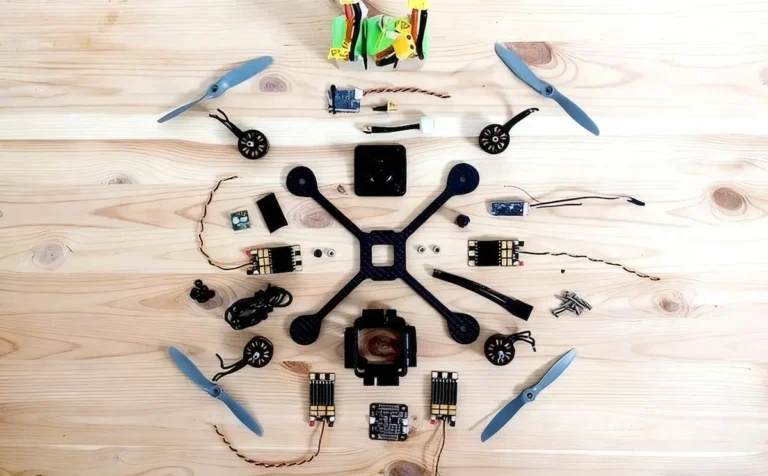The Hazards of Lithium-Ion Battery Self-Discharge in 2025
I. The nature of self-discharge: two types of irreversible “black holes in power”
| Type | characteristics | Restorative | key trigger |
|---|---|---|---|
| Reversible self-discharge | Temporary loss of capacity | Rechargeable | Uneven distribution of lithium ions |
| Irreversible self-discharge | Permanent capacity degradation | irrecoverable | Electrolyte decomposition/micro short circuit |
Industry gold index: K value (voltage drop rate)
High-quality batteries: K < 0.1mV/h
Hazard threshold: K > 0.5mV/h → cycle life reduced by 50%.
II. Three fatal triggers: from molecular reaction to manufacturing defects
1. Chemical side reaction: electrolyte’s “chronic suicide”.
Positive side: oxidation of electrolyte under high voltage (take EC as an example):
2EC → (CH₂OCO₂Li)₂ + C₂H₄ + 1/2O₂
→ depletion of activated lithium, gas production leading to swelling
Negative side: SEI membrane rupture and re-growth (graphite negative):
Li⁺ + e- + EC → Li₂CO₃ + C₂H₄
→ consumes 0.5nAh of active lithium per cycle
2.Microshort circuits: the hidden bomb of the manufacturing chain
| trigger source | Hazard level | Testing plan |
|---|---|---|
| copper shavings contamination | ⚡⚡⚡ | X-Ray + AI Quality Inspection (Detection Rate 99.8%)) |
| Lithium dendrite penetration | ⚡⚡⚡⚡ | AC impedance spectrum (>100kHz) |
| Diaphragm pore defects | ⚡⚡ | Helium leak detection (accuracy 0.01cc/min) |
Engineer’s test: 100 percent of the battery cells with a 10-fold increase in K value have micro-short circuits (Ningde Times production line data)
3. Runaway aging: the “thickening curse” of the SEI membrane
- After 300 cycles: SEI film thickness from 100nm → 300nm
- Internal resistance increase: >30% → 15% decrease in usable capacity.
III. Quadruple Strike: Destructive Chain Reaction of Self-Discharge
1. Permanent Capacity Decline
Irreversible self-discharge eats up 3-5% of capacity per month (25℃/full power storage)
Case: a storage plant’s capacity decayed by 28% in 2 years due to excessive self-discharge rate (exceeding the design value by 2 times)
2. Voltage dive triggers protection failure
Self-discharge causes voltage to drop below 2.8V → copper foil dissolves → internal short circuit
BMS misjudgment logic: voltage dive triggers over-discharge protection hysteresis
3. Thermal runaway chain reaction
Micro-short circuit –> localized overheating –> temperature > 90°C –> yes: SEI decomposition –> violent reaction of electrolyte –> thermal runaway
Data support: 80% of energy storage fires originate from cells with excessive self-discharge (TÜV 2025 report)
4. Battery pack consistency collapse
- Difference in self-discharge of series-connected packs >5% → voltage difference of 0.3V → overcharging risk soars
- Solution: Huawei’s intelligent voltage equalization technology reduces imbalance rate to <1%.
IV. China’s Solution: From Material Innovation to Intelligent Prevention and Control
1. Material-level blocking
Electrolyte additives:
BYD DTD additives: inhibit EC decomposition, reduce side reactions by 40%
Xinzhoubang LFO lithium salt: SEI membrane stability increased by 300%
Negative electrode modification: Betray SiOx pre-lithiation to compensate for active lithium loss
2. Manufacturing zero tolerance strategy
Dust control: Ningde Times Class 1000 clean room (0 particles >5μm)
72-hour high-temperature aging: 100% screening of K-value >0.2mV/h battery cells (Vision Power program)
3. BMS Intelligent Prevention and Control
| parameters | safety threshold | risky action |
|---|---|---|
| K value fluctuation | >0.3mV/h | Automatic trigger balancing |
| Storage SOC | 40-60% | Forced discharge after more than 7 days of full charge storage |
| temperature tracking | 35°C for 2 hours | Start cooling system |
Conclusion: Self-discharge control is the invisible moat of battery lifetime
When BYD’s DTD additive pressed the monthly self-discharge rate to <2%, and when Ningde Times’ clean workshop realized “zero tolerance” for microdust – China’s lithium battery life competition is being won or lost on the micro battlefield.
The ultimate formula:
Battery Life = Design Capacity / (Cycle Decay + Self-Discharge Loss)
And the secret of the top companies: infinitely close to 0 self-discharge loss!

